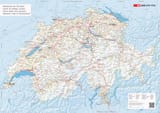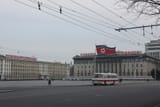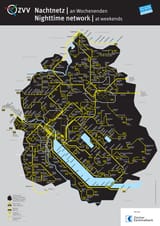Anonymous
5/30/2025, 3:17:56 PM No.2041920
We should just agree that Switzerland does absolutely everything right regarding transportation and that it should serve as an inspiration to all other countries (except HSR which would be pointless in a small country).
>public transport well-structured around intercity rail, regional trains and trams and buses
>schedules are structured around hourly repeating patterns and no service (except buses in very remote areas) runs less than hourly
>variety of local and express services covering different distances efficiently
>capillary system wherein the local transport is timed with long-distance services: The bus runs from the station just after the train arrives. Thus even with low frequency you have perfect connections.
>optimal coverage, you can get practically everywhere by public transport and only rarely have a bad connection
etc.
But it also goes further than public transit:
>rational highway system with enough capacity but no super freeways going everywhere
>city centers car-free in the very core (usually the old-town), most neighbourhoods are reasonably walkable without artificially encumbering road traffic
>no city access tolls, instead traffic is regulated by limited road capacity in the center. You can get there if you must, but it's slow so it gets discouraged
>bypass roadways outside the cities
The concept can be perfectly scaled and adapted, obviously not something like long-distance trains in the US or dumb ideas like that, but everything in the scale of regular ground transportation, from the local bus up to HSR which would just have to be added on top of the intercity services.
Honestly, all other countries are barely even trying at best, like Japan with its terrible public transit outside the urban areas and closing down rural rail lines.
>public transport well-structured around intercity rail, regional trains and trams and buses
>schedules are structured around hourly repeating patterns and no service (except buses in very remote areas) runs less than hourly
>variety of local and express services covering different distances efficiently
>capillary system wherein the local transport is timed with long-distance services: The bus runs from the station just after the train arrives. Thus even with low frequency you have perfect connections.
>optimal coverage, you can get practically everywhere by public transport and only rarely have a bad connection
etc.
But it also goes further than public transit:
>rational highway system with enough capacity but no super freeways going everywhere
>city centers car-free in the very core (usually the old-town), most neighbourhoods are reasonably walkable without artificially encumbering road traffic
>no city access tolls, instead traffic is regulated by limited road capacity in the center. You can get there if you must, but it's slow so it gets discouraged
>bypass roadways outside the cities
The concept can be perfectly scaled and adapted, obviously not something like long-distance trains in the US or dumb ideas like that, but everything in the scale of regular ground transportation, from the local bus up to HSR which would just have to be added on top of the intercity services.
Honestly, all other countries are barely even trying at best, like Japan with its terrible public transit outside the urban areas and closing down rural rail lines.
Replies:





